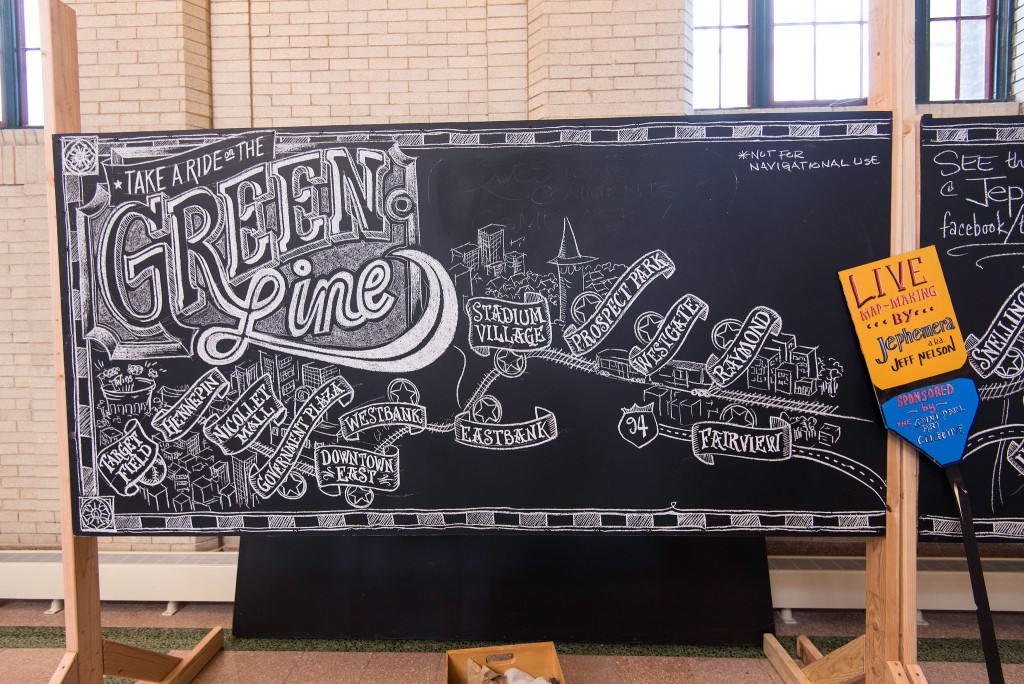
Business leaders and suburban mayors in the Twin Cities are pleading with state legislators, urging them not to throw away dedicated federal funding for a long-planned regional transit expansion by dropping the state’s financial commitment. Updated 9/1 with new information at the bottom of the post.
One of the major bills Minnesota legislators have been aiming to hammer out in a special session this fall is a capital bonding and transportation package to raise new state funding for transportation. But so far, Gov. Mark Dayton, the DFL-controlled Senate and the House Republican majority have failed to agree on a much larger package of tax cuts, transportation and infrastructure improvements — a package intended to include promised state funding to extend the existing Green Line light rail southwest into Minneapolis’ suburbs toward Eden Prairie.
Though $900 million in federal New Starts transit funds and $750 million in local tax funding have been pledged and $140 million has already been spent, this political stalemate over the state’s $135 million share is threatening to kill the project and send nearly a billion dollars in federal funds back to Washington (and then off to another project elsewhere in the country.)
Republican legislators in the House majority largely oppose spending state funding on the project whatsoever, even opposing a recent compromise to allow additional local funding to cover the state’s gap. This last-gasp effort at saving $900-plus million in federal funding would cover the state’s inaction by tapping a greater share of local funding on top of the $750 million already committed in local taxes.
As the Star Tribune reported last week:
Under the new proposal, which Dayton said his administration and Met Council staff devised just a day earlier, three entities would raise the $145 million state match: the Met Council would contribute $92 million, Hennepin County would contribute $21 million and the Counties Transit Improvement Board (CTIB) would kick in $32 million.
This compromise would allow the project to proceed without state legislative action, though there would still be hurdles to clear: each of these three bodies noted above would have to vote separately to approve their share of the $145 million, and do it quickly. Barring legislative action or successful votes on the compromise plan to increase local funding, the project will run out of funds by the end of September, forcing staff layoffs and the reassignment of private engineering firm employees.
A prominent group of 12 area CEOs that employ more than 100,000 area residents penned a letter to the Star Tribune back in the spring about state funding for transit and the planned regional projects, including the southwest light rail extension.
Wise investments in transit are worth making. Passing a comprehensive transportation bill that includes transit is critical in this session. If the state doesn’t act to provide funding for these projects, these federal dollars will go to a transit project in another state. Failure to act this year also means some of these projects will be in jeopardy. The business community can’t afford to miss out on this investment. Neither can the health of our communities, our region or the state of Minnesota. We hope state lawmakers will take action to ensure the best future for our region.
Minnetonka is one of the southwestern suburban cities the completed light rail line would pass through. Mayor Terry Schneider told the Star Tribune last week in that article above, “We’ve worked on this for five years, and we’ve come to the strong conclusion that it’s the best way for our city, the state and the region to meet the needs of the future. To waste the opportunity now, to squander it for internal bickering, would be a huge disservice to citizens of our state and region.”
9/1 UPDATE: The local jurisdictions reached a deal to cover the state’s unpaid $135 million share for the project to keep it moving ahead — including paying nearly $10 million in delay costs incurred by the state’s inaction during the legislative session. From The Met Council today:
The Southwest LRT Project is officially moving forward, after securing the remaining local funding commitments this week. …These contributions will together fill a $144.5 million funding gap, made up by the remaining necessary state match of $135 million plus $9.5 million in local delay costs caused by the legislature’s inaction in May.
 Finding solutions to debates over state funding for transit are the kind of topics we’ll be exploring in depth at Capital Ideas, our conference on state transportation funding and policy.
Finding solutions to debates over state funding for transit are the kind of topics we’ll be exploring in depth at Capital Ideas, our conference on state transportation funding and policy.
Check out the agenda, register today and join us in Sacramento this November 16-17.
Register here







